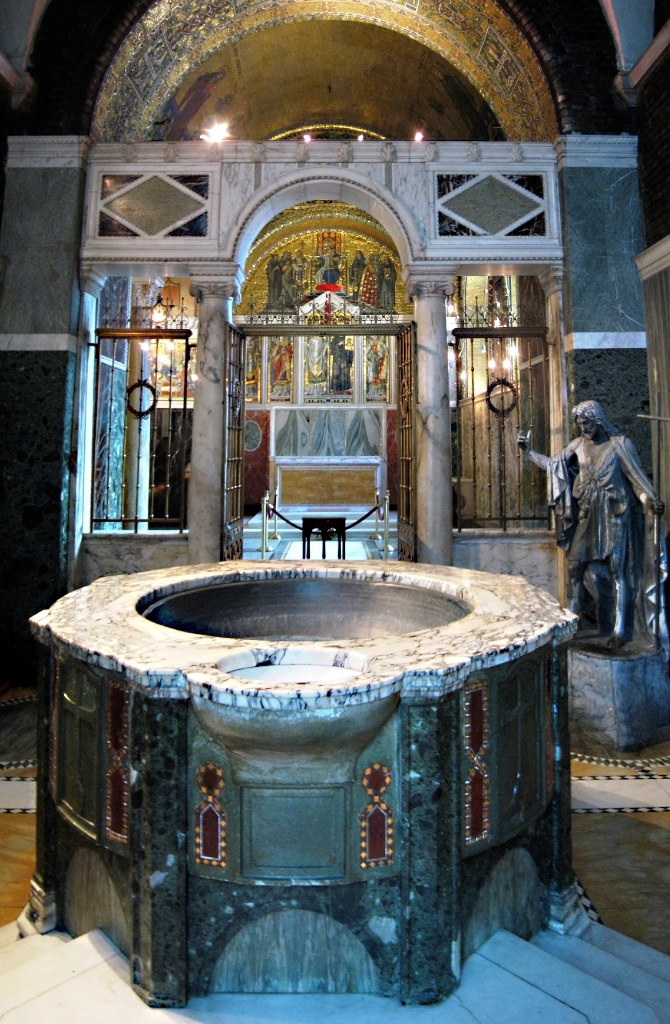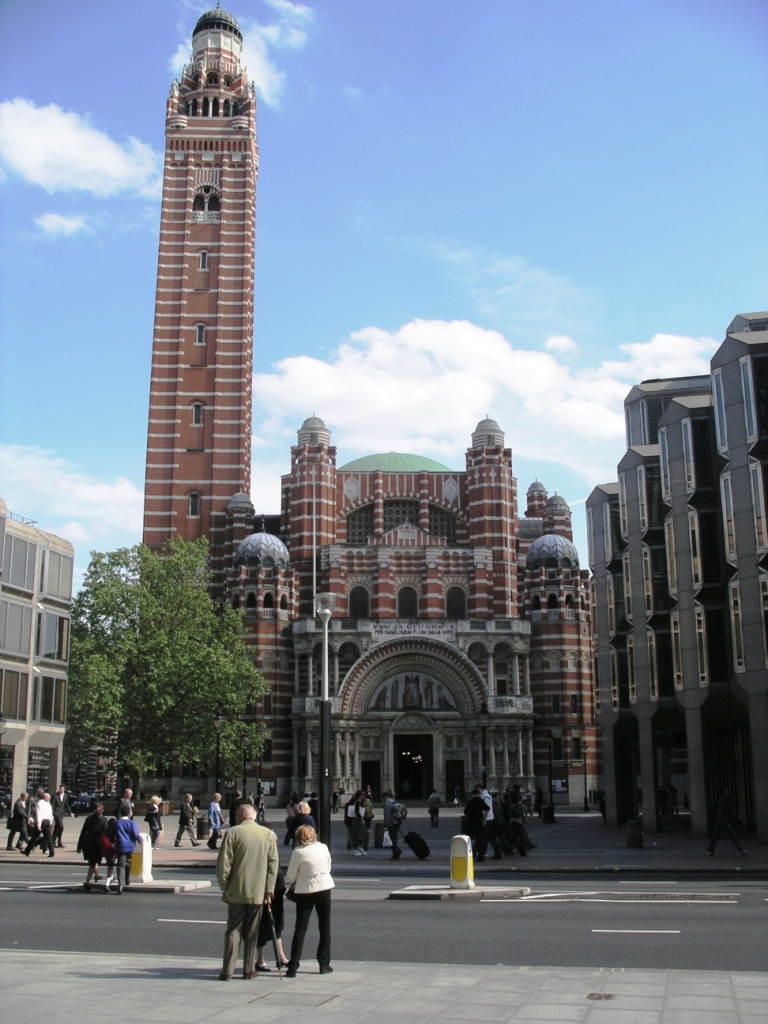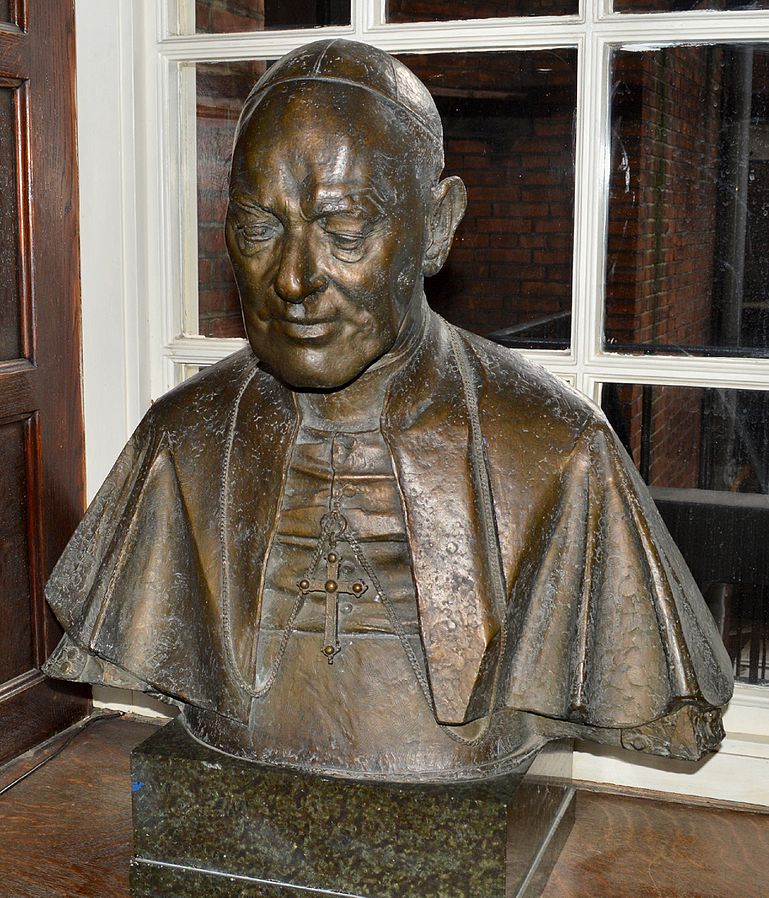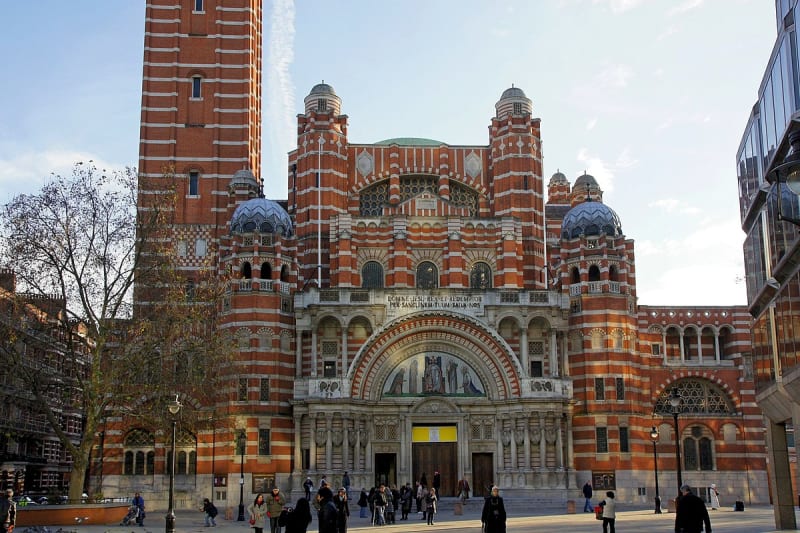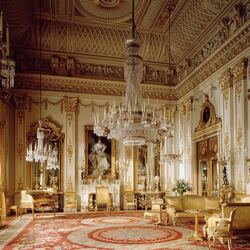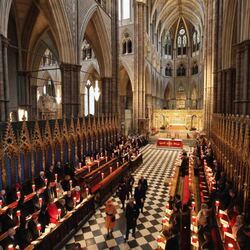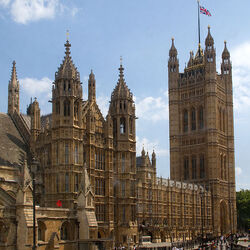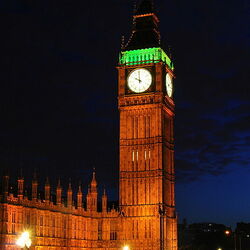Westminster Cathedral
Westminster Cathedral is known as the Cathedral of the Precious Blood, at the end of the Victorian period it replaced the Cathedral of St. George A. V. Pugin, which became the leading Roman Catholic Church not only in the capital, but also in the country. In preparation for the design of the building, by far the most important of his commissions, John Francis Bentley spent several months in Italy. The result was the construction of a neo-Byzantine cathedral, rather than in the Gothic Revival style.
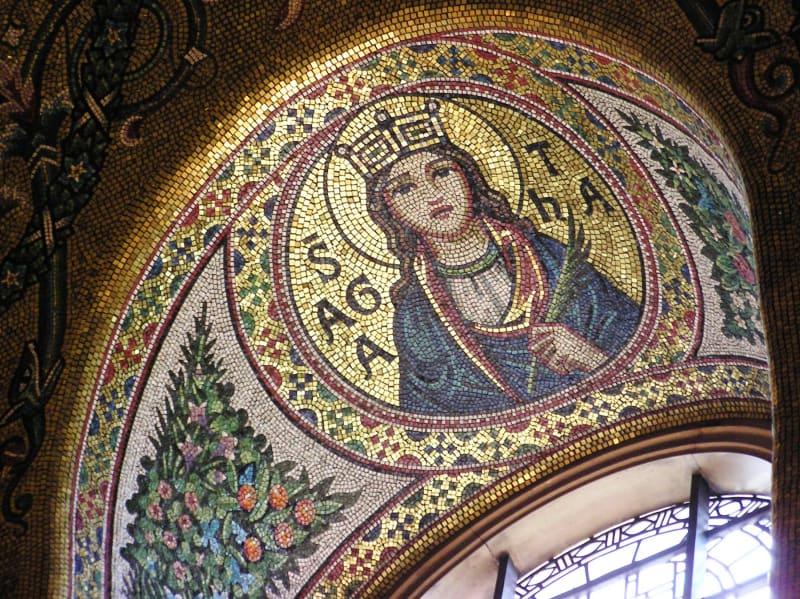
The background of Westminster Cathedral
After the religious upheavals of the Reformation, Catholic worship was either completely banned or severely restricted. It was not until the end of the 19th century that Catholics were allowed to freely practice religious rites in the UK, and the Catholic Church was officially restored in the UK. The established Catholic hierarchy wanted to have a mother church for religion. In 1884, land was purchased in Westminster on the site of Tothill Fields Bridewell Prison.
Byzantine charm
The construction of Westminster Cathedral began in 1895, and it opened its doors in 1903. Architect John Francis Bentley did not live to see the same opening ceremony, he died in 1902. However, what he created lives on as one of the most striking and impressive examples of neo-Byzantine architecture in Europe. Westminster Cathedral impresses with its colored brick construction, tall and attractive bell tower, and decorated interior in accordance with Byzantine mosaic and marble traditions.

Memory of the martyrs
One of the historical monuments is the church of St. John Southworth in the chapel of St. George and the English Martyrs. Southworth was executed for his Catholic faith in Tyburn in 1654. His body was brought to the cathedral in 1930. In the same chapel is the latest carving made by Eric Gill, depicting Jesus Christ on the cross surrounded by Saints Thomas More and John Fisher.
Tomb of the Bishops
The chapel of Saints Gregory and Augustine houses the grave of Bishop Richard Challoner (1691-1781), who is known for founding schools and charities for the poor. His translation of the Old and New Testaments remained the standard English translation for English Catholics for 200 years. Challoner escaped assassination during the Gordon anti-Catholic riots in 1780. The same chapel houses the grave of Cardinal George Basil Hume (1923-1999), who served as the ninth bishop of Westminster Cathedral since 1976.
The Cathedral of the Precious Blood or Westminster Cathedral is recognized as the 50th largest church in the world in terms of internal area (5,017 m2), accommodating up to 3,000 people. In Shekhar Kapoor's film Elizabeth: The Golden Age, the scenes set in El Escorial were shot in Westminster Cathedral, which adds to its appeal.

